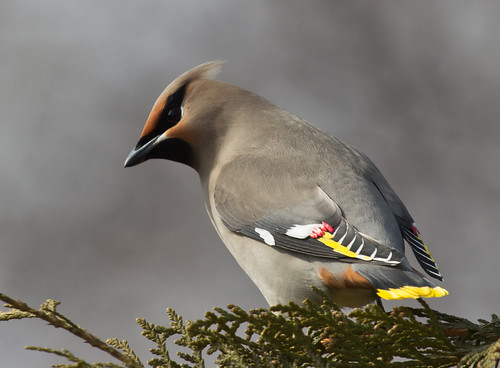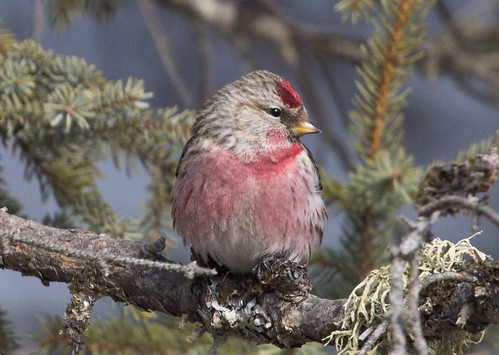 | |
|
At some point tomorrow, the
racers in the John Beargrease Sled Dog Marathon will reach the finish line. The Beargrease, the longest running sled-dog race
in the Lower 48, started in 1980, the year before Russ and I moved to Duluth. It’s
one of the qualifying races for mushers who want to enter Alaska’s famous
Iditarod. The route used to be fairly standard, from Duluth pretty much to the
Canadian Border and back again. Thanks to unpredictable weather and poor snow
conditions due to the increasing number of winter thaws in recent years,
sometimes the route has been shortened, and occasionally the race has been cancelled,
which is why although the marathon started 36 years ago, this is only the 32nd
running of it.
Considering how long the Beargrease has been a tradition up
here, and how it runs its course entirely outdoors where great winter birds can
be seen, it’s a little odd that I’ve never done a For the Birds program about the
race or about dogsledding in general, except a parody program for April Fools
Day, 1988, called “The John Chickenfat Bird Race. My friend Sparky Stensaas,
one of the best birders I know, provided the expertise and even served as stunt
double for the main character of the Disney film about a dogsled race, Iron Will. And I myself got to taste dog
sledding a bit during a weekend with my friend Kathleen Anderson in Brimson. I
first met Kathleen when she was producing radio segments about the Beargrease
for KUMD back in the 80s. So again, you’d think I’d have mentioned the race
here and there.
The problem is, there’s not a whole lot of bird action in
the Beargrease—indeed, birds would never get the point of such a thing. Most
songbirds could easily fly the 400 miles in a day and a half at most, even while taking time out to sleep from dusk to dawn. Being subservient enough to lug a musher and sled is
simply not within the scope of any bird’s imagination.
But like sled dogs, birds that are fully acclimated to
winter can get overheated when winter conditions get too mild.
Birds of course
set their own pace, unlike sled dogs who have to obey the musher, so bird
problems during winter thaws have nothing to do with getting overheated. But
the same bad snow conditions that make running in snow difficult for sled dogs
also can be hard on birds. Grouse and even many songbirds such as redpolls
burrow into soft deep snow on subzero nights—the temperature in these burrows can
be as much as 36 Fahrenheit degrees warmer than the air temperature, with no
wind. When repeated daytime thaws make the snow icier, it becomes increasingly
difficult for even birds as large as grouse to make these tunnels, and tiny
redpolls don’t have a chance.
It’s been our warming winters that have caused delays,
rerouting, and even cancellations of some past Beargrease marathons. These same
situations have been hard on Gray Jays, which start nesting in February.
You'd think milder conditions when they have eggs and nestlings would be good, but Gray Jays depend on the stores of meat they cached through the fall and early winter
for insuring a steady supply of food for the nesting female and the nestlings
once they hatch. Unfortunately, those thaws do to the food stores exactly what
a power outage do to food in our freezer. If you can imagine coming back from a
trip and everything seems fine until you thaw out a chicken and it’s rancid
because the electricity had gone out for several days—that’s what these poor
birds deal with at nesting time after a few winter thaws.
But who wants to think about those hardships when you’re
watching a Gray Jay, or teams of dogs and mushers running through the snow? The
one time I was on a dog sled, I was struck with how quiet it was, and how
magical. I could see ravens and Blue Jays, and a flock of finches. When I flock
of Bohemian Waxwings flew by, I could even hear their chattering. I’m sure the
mushers in the marathon are more focused on their dogs and the terrain, if they
actually want to win. But that lovely hour on a dog sled stuck in my memory as
a joyful experience, and for me that joy included the birds I could notice.
 |
| Photo by Lisa Johnson, Pupparazzi Companion Animal Photography |
I’m glad our wonderful sled dog tradition, with its rich
history based on the original John Beargrease, is honored with this wonderful
event. Beargrease, the son of an Anishinabe chief, was an avid hunter and
trapper in the late 1800s who on his regular runs between Two Harbors and Grand
Marais started carrying mail as well. I
don’t know how much he paid attention to birds, and I don’t know how much the
mushers do today, but somehow there is a bond between all of us who love the
natural wonders of the northwoods in winter, however we enjoy them.
 |
| Bohemian Waxwing |

